
Having finished up in Hong Kong with the Red Bull Illume event last year, I set off for a couple of weeks in Cambodia. It turns out that the easiest way to get into Cambodia from Hong Kong is to fly to Bangkok first and then take a train to the Cambodian border from there. On that trip I had the opportunity to take a few pieces of equipment with me for testing and review purposes, one of which was the Canon 24-105 f/4 L IS USM. This lens’ do-it-all focal range makes it a popular choice for travel photography where you want a simple one lens, one body kit. I’ve actually owned the lens myself in the past, but I didn’t use it specifically for travel photography so I though on this trip I’d spend a couple of days in Bangkok and see how it worked in that scenario.
Lens Build & Handling

You come to expect a certain level of build quality as soon as Canon slap a red ring around a lens and give it the ‘L’ designation. The 24-105 is by far one of Canon’s cheapest L series lenses, but it still feels solid in every respect and it balances very nicely with smaller sized bodies like the 6D and 5D Mark III that I had with me. The 77mm filter thread on the front is also welcome and this matches size with the 17-40 that I also had with me, whereas my own 24-70 f/2.8 has the annoyingly large 82mm size thread on it. Zoom and focus rings are smooth, though they aren’t quite as nice as some of Canon’s later lenses like the 16-35 f/4 L IS and the aforementioned 24-70 f/2.8. There is no zoom lock switch as there are on some of the other standard zooms, but the internal friction of the zoom mechanism was enough that I didn’t have creep issues that annoyed me. I have heard of creep developing on this lens after prolonged usage but it’s not something I experienced this time, nor was it something I ever found to be a problem in the couple of years that I owned my own copy of it.
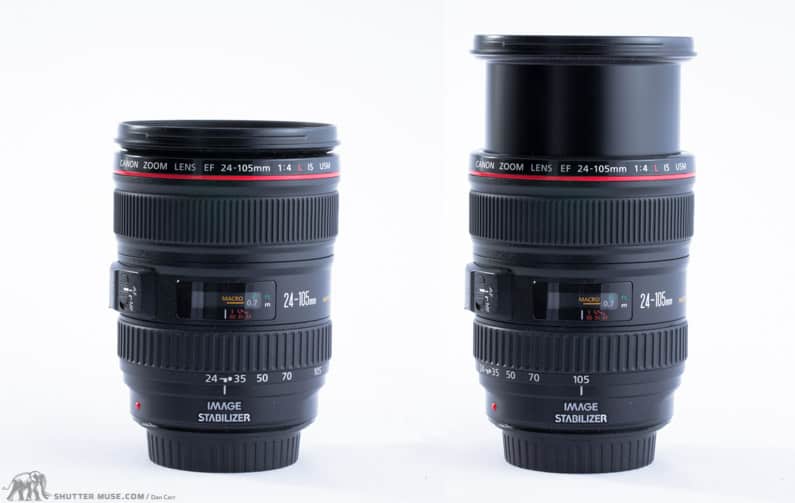


90mm and f/11 for 2.5 seconds
This shot is a great example of what a general purpose lens should be good for as this was actually taken using a tabletop tripod while I was eating dinner. I hadn’t planned on eating at that restaurant, nor did I even know of the existence of this temple, but having a great all round lens as my one lens allowed me to capture a memorable image.

Lunch time! Canon 24-105 @ 67mm and f/5.6

Yes the train really does pass right through this market! Bizarre!
The 24-105mm Range – Who’s It For?
To answer this question we need to take into account the sensor size of the camera. On a full frame camera the 24-105 range manages to span three distinct areas; landscape, ‘standard’ and portraiture. By ‘standard’, I’m referring to the 50mm zone that’s often regarded as general purpose since it roughly equates to how our eye sees things. Whilst landscape images can sometimes benefit from a wider field of view that that provided by a 24mm focal length, for most scenarios I find 24mm to be just about perfect. This lens does introduce quite a lot of distortion on the 24mm end though so you have to be a little careful about the placement of straight lines in the image, or be prepared to use profile correction in Lightroom during your processing. Vignetting is noticeably strong on a full frame camera at f/4 and 24mm as well, but for landscape images you’ll be stopped down well beyond this so it tends to be a non-issue. There were a few instances on this Bangkok trip where I shot at 24mm and wide open and was a little displeased by the vignetting I was seeing when I got the images back to the computer. I would say that it’s the lens’ biggest weakness, but it’s quickly correctible in Lightroom unless you are shooting at very high ISOs, at which point the severity of the correction needed will bring unacceptable amounts of noise into your image’s corners. It’s not a deal-breaker by any means, but it’s something to bear in mind while you are shooting. As well as landscape photography, the 24mm focal length is also great for travel photography to allow you to capture vast building interiors, views from the top of high buildings, architecture and crowded street scenes. The image stabilization comes into its own for those interior images, or night-time street scenes, where hand-held shooting is possible at shutter speeds down to about 1/4 or 1/3 of a second when 24mm is used.
As the lens zooms towards the ‘standard’ area of 50mm, barrel distortion vanishes and vignetting becomes a non-issue. 50mm always has been a great general purpose length and many people will probably find themselves shooting at either end of the zoom’s range, or somewhere in the middle, which equates roughly to the 40-50mm zone. Here you’ll find uses for it when shooting people or natural landscapes. It’s an extremely versatile focal length and no goo ‘walkabout’ lens should ever be without this length in its range.
At 105mm we’ve got ourselves a nice length for portraiture and also simply for isolating a subject in an image where you want to get a good out of focus background. 70mm might be more talked about as a portraiture length, but often at wider apertured than the max f/4 that’s available on this lens. That little extra compression afforded by the slightly longer 105mm focal length creates a look that’s pretty comparable to a shorter 70mm length at something like f/2.8. As can be seen from the two examples directly below this paragraph, this focal range really spans that particular range that can create two very different looking images.

Canon 24-105 f/4 L IS at 24mm

Canon 24-105 f/4 L IS at 105mm
If you’re considering this lens for use on a crop sensor body then this changes things quite a bit. In my opinion, a 38-168mm equivalent focal length is far less useful as a walk around lens because it lacks anything you might call a wide-angle. Using this Bangkok weekend trip as an example, I would have missed numerous shots if my widest option was a 38mm lens. It definitely would have necessitated carrying a 16-35 with me as well and that defeats the purpose when you’re seeking a lighter, simpler setup. You might conceivably still consider this lens on a crop body if you are planning on purchasing a full frame camera at a later date and don’t want to go down the route of buying EF-S lenses that won’t be compatible as you move up to a larger sensor. Just know that if you do, then you’ll probably want to carry a second lens with you to really achieve that perfect range. On the plus side, the vignetting issues on the wide end are a non-issue on an APS-C camera.
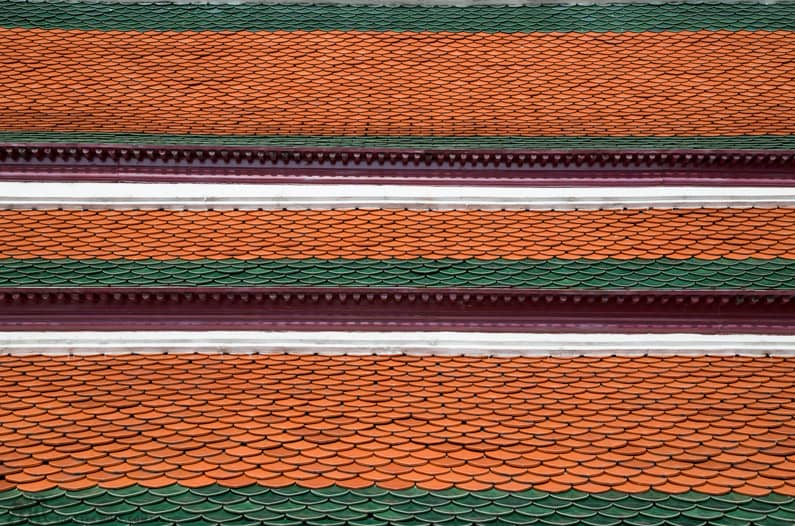
Bangkok rofftops. In the central range of the lens (40-60mm), barrel and pincushion distortion is non-existent.

Other Options

Canon 24-105 f/4 L IS Vs. Canon 24-70 f/2.8 L II
As soon as I sat down to write this review I knew that this was likely to be the largest section of the article. Canon has several other options that fall roughly into the same range as this lens so it definitely gives you something to think about and you need to be quite clear about what it is that you want to shoot, and what the relative merits are for each of the other options. I’d hazard a guess that most of the people reading this article are trying to make a decision between some of these lenses to let’s break them down:
Canon 24-70 f/4 L IS USM
When Canon launched this lens there were more than a few “HUH?”s around. I’ve got to say that I was one of them, until I actually purchased the lens myself to test it out and then it became much clearer to me. What’s interesting is that Canon never discontinued the 24-105 f/4 L IS when the 24-70 was launched so it was clear that this wasn’t a direct replacement. Why would anyone buy a lens that had a shorter range than the 24-105 though? The 24-70 f/4 L IS is physically smaller and lighter than the 24-105, and while it’s not a huge difference, I do believe it’s noticeable after prolonged periods of carrying. Though this lens is actually newer than the 24-105, it’s also (at time of writing) $150 cheaper after a pretty heavy price drop on it in recent months. Add to this the fact that it has a 4-stop image stabilizer Vs. the 3-stop one on the 24-105 and you’re staring to see why this is a relevant consideration. The real ace in the hole for this lens though is the incredibly impressive macro mode. Unlike any other Canon lens at this point, it actually has a macro switch that, at the end of the zoom range, allows you to effectively shift the optical element forwards away from the lens mount just like an extension tube would. The net result is a 0.71x magnification and a 7.9” MFD. By far and away the best of any Canon zoom lens. In fact no other lens comes even remotely close unless of course you include dedicated macro lenses. So effectively, whilst you do loose some focal range between 70mm and 105mm, you also gain an awful lot of usefulness in the macro range. You could argue that the different look of a macro image is much more different than the look of an image taken in the ‘missing’ 70-105mm range. If 70mm isn’t enough reach for you then you do often have the option to either get closer, or crop it later on your computer. With the 24-105 though, there’s no way to recreate the macro shots that the 24-70 is capable of at all. Whilst the 24-105 has a greater range in terms of mm and focal length, I think it’s not too hard to argue that the 24-70 has a greater range when you’re talking about image styles and photo opportunities. In my testing, I’ve also found the 24-70 f/4 L IS to be a tad sharper, and exhibit considerably less vignetting than the 24-105 at the wide end.Of particular note to landscape photographers is also the fact that the 24-70 has a lot less distortion than the 24-105 at the 24mm end of its range.
Canon 24-70 f/2.8 L II USM
The elephant in the room when you begin to talk about the Canon 24-70 f/2.8 L II is always the price. This lens is TWICE the price of the other options so it’ll probably be ruled out by a lot of people for that reason alone. Again, this is a lens that I own and I’d put this alongside my Canon 200-400 as my desert island lens kit. It’s unbelievably sharp! As you’d hope for the price, it bests the f/4 IS version of the lens in every single way optically. Less distortion, less chromatic aberration and less vignetting. It is about 25% heavier though and feels, to me, more balanced on a 1-Series body rather than a smaller body like a 5D. To own this lens is to own one of Canon’s finest optical achievements, but the lack of IS bugs a lot of people. What image stabilization can never give you is a faster shutter speed, only a wider aperture like f/2.8 can do that. As such, the 24-70 f/2.8 L II is great for sports photography or anything else where you’ll be shooting moving subjects. If it’s purely static subjects in low light that you’re shooting, both the 3-stop IS of the 24-105 and the 4-stop IS of the 24-70 f/4 will actually give you a greater options for exposure. As a travel photography lens then, where you could conceivably find yourself exploring many dark buildings, either of the IS options might be a better choice. For landscapes, most people should have the camera on a tripod anyway so IS isn’t really a factor in the decision. If portraiture is a big part of your shooting though, the creamy bokeh that this lens produces at f/2.8 and 70mm is much more preferable than the f/4 lens options.
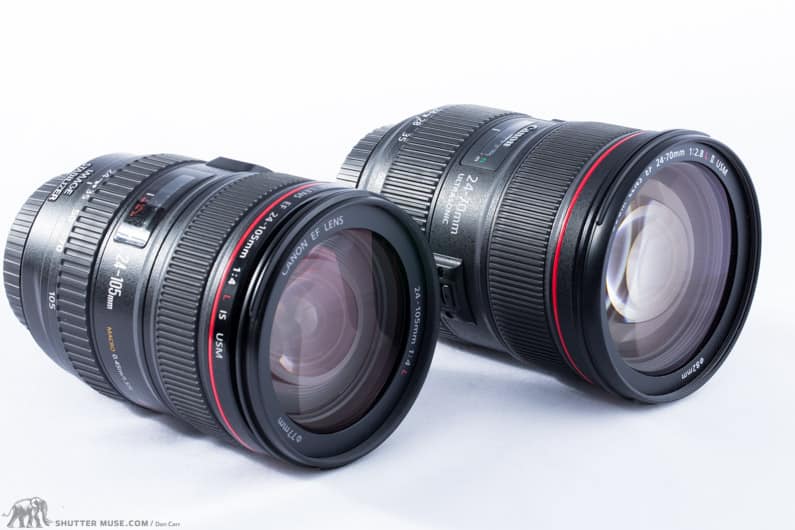
Canon 24-105 f/4 L IS Vs. Canon 24-70 f/2.8 L II
Canon 24-105mm f/3.5-5.6 IS STM
At the time of writing this review, this lens is not yet shipping, though it’s expected to be very very soon and more than likely will be by the time you read this. At $599, it’s a considerably cheaper option than those that we’ve discussed so far, though the variable aperture will put many people off right away. I expect this lens to perform very well optically, but it’s not weather sealed and its plastic construction means it’s not quite as sturdy as the L-Series options we’ve talked about so far. Of interest to filmmakers though is the STM motor which provides smooth and silent continuous focus during video shooting. If you are primarily shooting video, with cameras like the new 7D Mark II that have dual-pixel AF, then this is an important feature if you plan on using autofocus in your videos.
Sigma 24-105mm F/4 DG OS HSM
Sigma have upped their lens game in the last couple of years and the 24-105mm is no exception. It’s an excellent lens that matches the Canon 24-105mm in almost every area. It’s a touch heavier though and for a walk-around lens that’s a factor. It’s also not weather sealed. Retail price is $899 as well and that’s not a whole lot different to the Canon’s price, especially when you can often find Canon’s version cheaper than retail when they have been a part of a kit (like the 6D or 5D MK3 kits). If price is your #1 factor then I don’t think you’d be disappointed with this lens, but are you going to be always wishing it had a red ring around it?



Bonus Images From The Vault
Here’s a few other images that I’ve shot with the Canon 24-105 f/4 L IS USM. As you can see, it’s a bit of a do-it-all !!



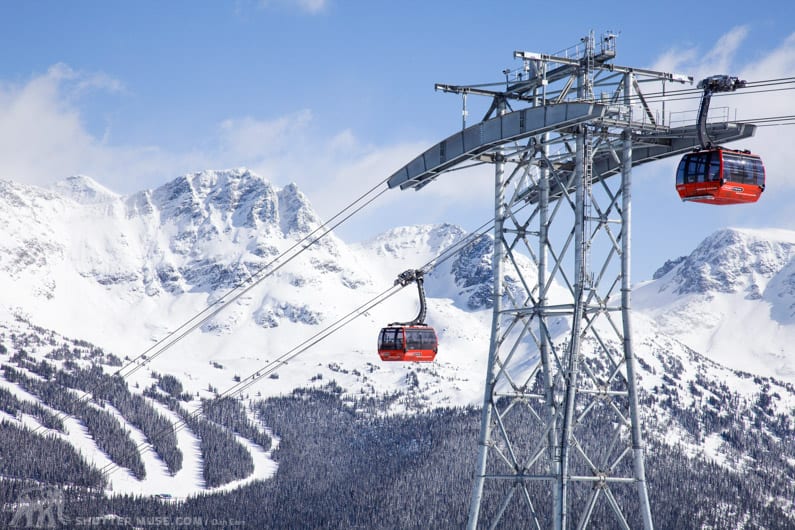
Conclusion

As I mentioned at the start of this review, this is actually a lens I’ve owned myself for a couple of years so my overall conclusion isn’t just based on the couple of days in Bangkok, that was more of a ‘refresher’. There’s a good reason why Canon chooses to make this the kit lens for the 5D and 6D cameras, it’s a solid all-rounder on a full frame camera. 24mm is wide enough for landscape images and 105 mm is long enough for portraiture. On an APS-C camera this would feel like a bit of an odd duck though and isn’t going to be wide enough for most people, there’s better options for crop sensor users. It’s not a lens that’s ever blown me out of the water in terms of image quality, but it’s rarely disappointed me either. I would try and stop it down a touch from f/4 whenever I can because vignetting on the wide end it very prominent, but overall, things are sharp enough that you can rely on it to get you something good to work with. Even if you do have to apply a profile quickly to remove CA, correct some distortion and brighten those corners up again. Using it on this quick excursion in Bangkok was perfect because I truly limited myself to this one lens, despite having 6 or 7 others in my hotel room. I never found myself frustrated by that decision though, the 24-105 had me covered for everything I was looking for and during humid, hot days I was glad to be carrying a simple one camera, one lens kit around with me. Sometimes a simple one lens kit gives you freedom to think about your surroundings and enjoy your travels, rather than burdening yourself with the weight and choice of other lenses.







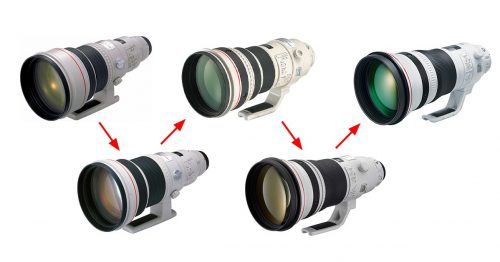


Hi Dan
Just been reading your reviews/opinions on the 24-105 range of lenses, including the 24-70 models. If you don’t mind me pointing out there are a couple of typos; you mention the 14-105 (24?) And that the 24-105 has 3 “5tops” of IS.
Thanks for the review; more or less confirms my choice but means I now would like the 24-70/2.8!
Regards
Thanks for pointing those out. I’ll fix them now.